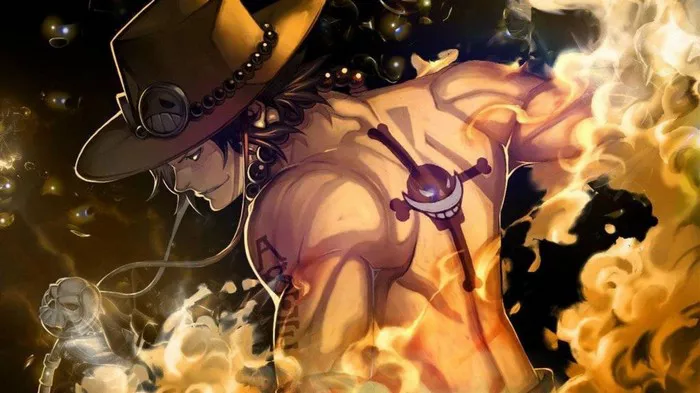In Eiichiro Oda’s epic manga and anime series “One Piece,” Portgas D. Ace stands out as one of the most charismatic and heartfelt characters, whose legacy continues to impact the story long after his departure. This article delves into the intricate details of Ace’s age throughout his appearances in the series, explores his background, and examines the impact of his character on the narrative and the One Piece fan community.
Portgas D. Ace
Portgas D. Ace, initially introduced as “Fire Fist Ace,” is a pivotal character in the One Piece universe. He is the sworn older brother of Monkey D. Luffy, the protagonist, and Sabo, the Chief of Staff of the Revolutionary Army. Born as Gol D. Ace and later adopting his mother’s name, Portgas, to conceal his identity from his father’s enemies, Ace’s life is marked by his legacy and his pursuit of his own path as a pirate.
Ace’s Chronological Age and Timeline
To understand the depth of Ace’s character, it is essential to pinpoint his age during key events in the One Piece storyline. Ace’s age provides context to his actions and decisions, which are pivotal to the series’ larger narrative arcs.
Birth and Early Years
Ace was born on Baterilla in the South Blue. His birth is significant as he is the son of the Pirate King, Gol D. Roger, who was executed shortly before Ace’s birth. Ace’s mother, Portgas D. Rouge, held him in her womb for an extended period beyond a normal pregnancy to protect him from being hunted by the World Government. This feat ultimately cost Rouge her life, leaving Ace to be raised by Monkey D. Garp, a vice admiral of the Marines and Luffy’s grandfather.
Joining the Spade Pirates and Becoming a Whitebeard Pirate
Ace set out to sea and became the captain of the Spade Pirates at the age of 17. His journey eventually led him to encounter Whitebeard, one of the Four Emperors of the Sea, who took Ace and his crew under his protection, effectively integrating them into the Whitebeard Pirates. Ace was approximately 20 years old during this pivotal moment in his life, which marked a significant development in his pirating career and personal growth.
The Paramount War and Ace’s Death
Ace’s pursuit by the World Government came to a head when he was captured and sentenced to death, leading to the Paramount War at Marineford. This battle saw the Whitebeard Pirates and their allies clashing with the Marines to save Ace. Despite their efforts, Ace died at the age of 20, protecting Luffy from Admiral Akainu. His death marks one of the most momentous and emotional points in the One Piece series.
The Significance of Ace’s Age in One Piece
Ace’s relatively young age during these significant events highlights his bravery and the immense responsibilities he bore. His actions and their consequences are central themes in One Piece, reflecting the struggles of youth against overarching powers and the pursuit of one’s own identity in the face of immense legacy.
Impact on the One Piece Narrative
Ace’s character development, relationships, and ultimate sacrifice play crucial roles in shaping the paths of other characters, especially Luffy. His death profoundly affects Luffy, spurring significant growth in his character and ambitions. Furthermore, Ace’s story is intricately linked with the overarching plot of One Piece, including the mysteries surrounding his father, Gol D. Roger, and the Will of D.
Ace’s Legacy and Cultural Impact
Beyond the narrative, Ace has left a lasting impact on the One Piece community. His character resonates with themes of freedom, self-worth, and the bonds of brotherhood, making him a fan favorite. Merchandise, fan art, and continuous discussions about his role and what could have been if he had survived reflect his enduring popularity.
Conclusion
Portgas D. Ace’s journey through the world of One Piece is a poignant narrative of growth, struggle, and legacy. Although his life was tragically short, the depth of his character and the intensity of his life’s events at such a young age continue to resonate with audiences worldwide. Ace’s story is a testament to Eiichiro Oda’s ability to create multi-dimensional characters whose lives and choices evoke strong emotional responses and contribute to the rich tapestry of the One Piece saga. As the series progresses, Ace’s influence remains a pivotal element, reminding us of the enduring impact of legacy and the power of determination.

